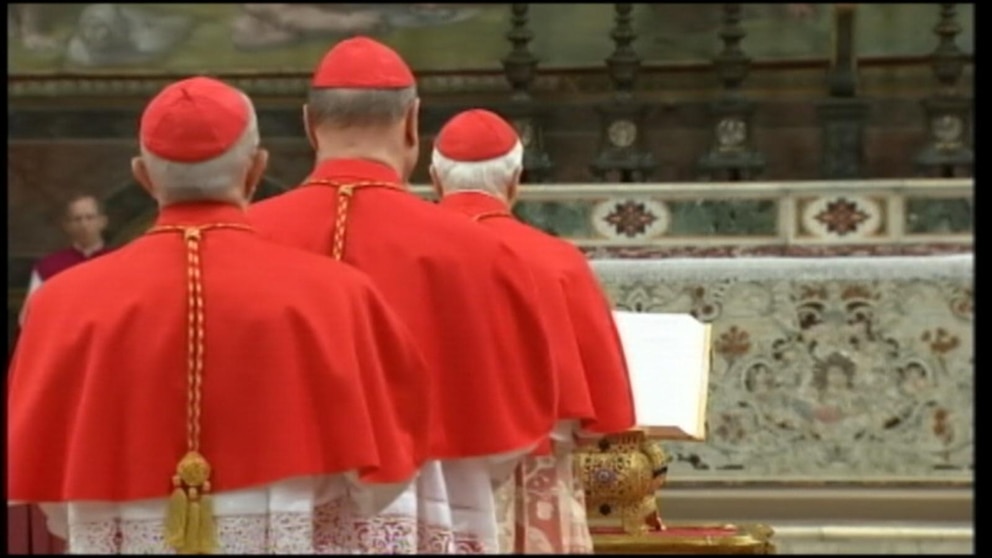Understanding The Conclave: The Process Of Electing The Next Pope

Table of Contents
The Call to Conclave
Upon the death or resignation of a Pope, a specific process is initiated, setting in motion the Papal Conclave. The Church enters a period known as sede vacante (vacant see), a time of transition overseen by the Cardinal Camerlengo, a senior cardinal who acts as the administrator of the Holy See. The Camerlengo's responsibilities during this interim period are crucial, ensuring the smooth functioning of the Vatican and preparing for the Conclave.
- Announcement of the Pope's death/resignation: The official announcement triggers a period of mourning and preparation for the election.
- Preparation of the Sistine Chapel: The Sistine Chapel, the historic location of the Conclave, undergoes meticulous preparation, ensuring a secure and private environment for the cardinals. Security is heightened, and the chapel is furnished for the cardinals' residence and voting process.
- Gathering of eligible cardinals: Cardinals from around the world, summoned to Rome, converge on the Vatican to participate in the election of the new Pope. This gathering of cardinals represents a global assembly of the Church's highest-ranking officials.
Eligibility and Participation in the Papal Conclave
Only cardinals under the age of 80 are eligible to participate in the Papal Conclave. This age limit ensures a balance between experience and vitality within the leadership of the Church. The College of Cardinals, the body of cardinals worldwide, is thus crucial because only a subset of its members are involved in the Conclave. Their collective responsibility rests on choosing the next successor to St. Peter.
- Cardinal electors' oath of secrecy: Before the Conclave begins, cardinal electors take a solemn oath of secrecy, promising to uphold the confidentiality of the proceedings. This vow ensures the integrity and impartiality of the election process.
- The significance of the number of cardinals: The number of eligible cardinal electors significantly influences the dynamics of the Conclave, impacting the potential for consensus or protracted voting. A large number of cardinals can mean a more diverse range of views and a potentially longer process.
- Potential challenges related to eligible cardinal electors: Situations such as illness or unforeseen circumstances among eligible cardinals can present logistical and procedural challenges during the Conclave.
The Seclusion and Voting Process
The Papal Conclave is characterized by the cardinals' confinement within the Vatican. This seclusion ensures privacy and focus on the election process, free from external influences. The voting process itself is carefully structured, with ballots used to cast votes in secret. The outcome is signaled by colored smoke emerging from the Sistine Chapel chimney.
- Details on the ballot process and its secrecy: The use of secret ballots ensures that each cardinal can cast their vote freely without fear of coercion or undue influence. The meticulous process minimizes the possibility of external manipulation.
- The significance of the black and white smoke signals: Black smoke signifies that no candidate has received the necessary two-thirds majority vote, while white smoke indicates the election of a new Pope. These simple signals are eagerly awaited by the world.
- The role of the scrutineers and their responsibilities: Scrutiners are cardinals responsible for counting the ballots and ensuring the integrity and secrecy of the voting process. They play a vital role in verifying the results.
Election of the Pope and the Papal Inauguration
Once a candidate receives the necessary two-thirds majority of votes, the election is concluded. The Dean of the College of Cardinals then formally asks the newly elected Pope if he accepts the election. Upon his acceptance, the announcement – Habemus Papam! ("We have a Pope!") – is made from the balcony of St. Peter's Basilica.
- The formal acceptance of the papacy by the new Pope: This moment marks the official transition of leadership within the Catholic Church.
- The Papal Inauguration ceremony and its significance: The Papal Inauguration is a grand ceremony filled with religious symbolism and tradition, officially installing the new Pope as the head of the Catholic Church.
- The new Pope's first actions and priorities: The newly elected Pope typically outlines his priorities and vision for the Church in his first addresses and pronouncements.
Conclusion
The Papal Conclave, a complex and fascinating process, is central to the continuity and leadership of the Catholic Church. Understanding the intricacies of the Papal Conclave, from the initial call to the final Papal Inauguration, provides valuable insight into the governance and tradition of one of the world's largest religious organizations. The secrecy surrounding the process adds to its mystique, while the ultimate outcome profoundly impacts billions of Catholics worldwide. To further your knowledge of this significant event, explore additional resources on the history and evolution of the Papal Conclave. Learn more about the history and intricacies of the Papal Conclave today!

Featured Posts
-
 High Profile Nhl 4 Nations Face Off Pei Bill Tops 500 000
May 07, 2025
High Profile Nhl 4 Nations Face Off Pei Bill Tops 500 000
May 07, 2025 -
 Anthony Edwards And Ayesha Howard Custody Battle Resolved
May 07, 2025
Anthony Edwards And Ayesha Howard Custody Battle Resolved
May 07, 2025 -
 Trumps Xrp Endorsement A Catalyst For Institutional Investment
May 07, 2025
Trumps Xrp Endorsement A Catalyst For Institutional Investment
May 07, 2025 -
 Kumingas Return Fuels Warriors Victory Curry Kerr Hit Milestones Against Kings
May 07, 2025
Kumingas Return Fuels Warriors Victory Curry Kerr Hit Milestones Against Kings
May 07, 2025 -
 Analysis Trumps Financial Gains In The Cryptocurrency Market
May 07, 2025
Analysis Trumps Financial Gains In The Cryptocurrency Market
May 07, 2025
